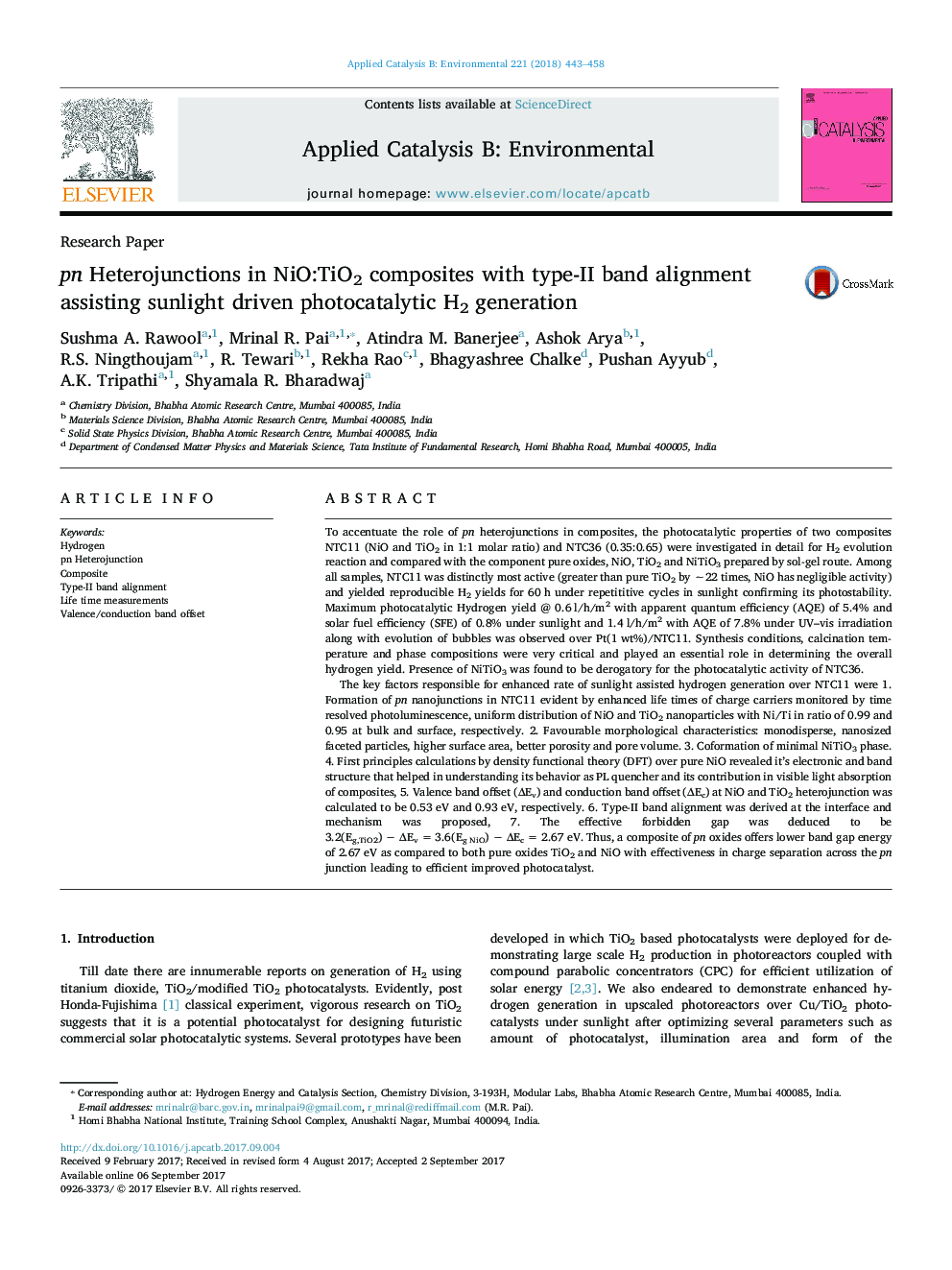| کد مقاله | کد نشریه | سال انتشار | مقاله انگلیسی | نسخه تمام متن |
|---|---|---|---|---|
| 6453474 | 1418799 | 2018 | 16 صفحه PDF | دانلود رایگان |

- Composites, NTC11 distinctly most active (H2@0.6Â l/h/m2)Â >Â 22 times than pure TiO2.
- Undeterred H2 yields monitored for 60Â h under sunlight.
- VBO/CBO calculated and Type-II band alignment established at pn heterojunctions.
- Supported by DFT and Life time measurements by time resolved PL spectroscopy.
- Band energetics and mechanistic aspects were investigated.
To accentuate the role of pn heterojunctions in composites, the photocatalytic properties of two composites NTC11 (NiO and TiO2 in 1:1 molar ratio) and NTC36 (0.35:0.65) were investigated in detail for H2 evolution reaction and compared with the component pure oxides, NiO, TiO2 and NiTiO3 prepared by sol-gel route. Among all samples, NTC11 was distinctly most active (greater than pure TiO2 by â¼22 times, NiO has negligible activity) and yielded reproducible H2 yields for 60 h under repetititive cycles in sunlight confirming its photostability. Maximum photocatalytic Hydrogen yield @ 0.6 l/h/m2 with apparent quantum efficiency (AQE) of 5.4% and solar fuel efficiency (SFE) of 0.8% under sunlight and 1.4 l/h/m2 with AQE of 7.8% under UV-vis irradiation along with evolution of bubbles was observed over Pt(1 wt%)/NTC11. Synthesis conditions, calcination temperature and phase compositions were very critical and played an essential role in determining the overall hydrogen yield. Presence of NiTiO3 was found to be derogatory for the photocatalytic activity of NTC36.The key factors responsible for enhanced rate of sunlight assisted hydrogen generation over NTC11 were 1. Formation of pn nanojunctions in NTC11 evident by enhanced life times of charge carriers monitored by time resolved photoluminescence, uniform distribution of NiO and TiO2 nanoparticles with Ni/Ti in ratio of 0.99 and 0.95 at bulk and surface, respectively. 2. Favourable morphological characteristics: monodisperse, nanosized faceted particles, higher surface area, better porosity and pore volume. 3. Coformation of minimal NiTiO3 phase. 4. First principles calculations by density functional theory (DFT) over pure NiO revealed it's electronic and band structure that helped in understanding its behavior as PL quencher and its contribution in visible light absorption of composites, 5. Valence band offset (ÎEv) and conduction band offset (ÎEc) at NiO and TiO2 heterojunction was calculated to be 0.53 eV and 0.93 eV, respectively. 6. Type-II band alignment was derived at the interface and mechanism was proposed, 7. The effective forbidden gap was deduced to be 3.2(Eg,TiO2) â ÎEv = 3.6(Eg NiO) â ÎEc = 2.67 eV. Thus, a composite of pn oxides offers lower band gap energy of 2.67 eV as compared to both pure oxides TiO2 and NiO with effectiveness in charge separation across the pn junction leading to efficient improved photocatalyst.
244
Journal: Applied Catalysis B: Environmental - Volume 221, February 2018, Pages 443-458